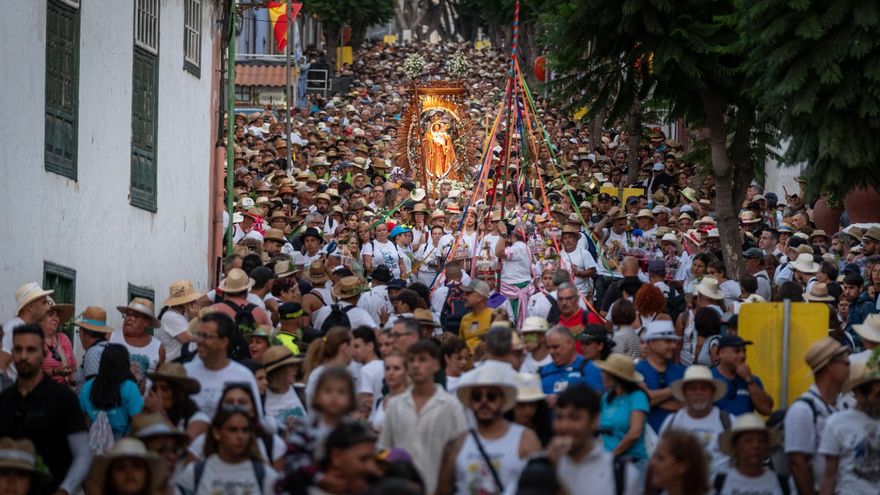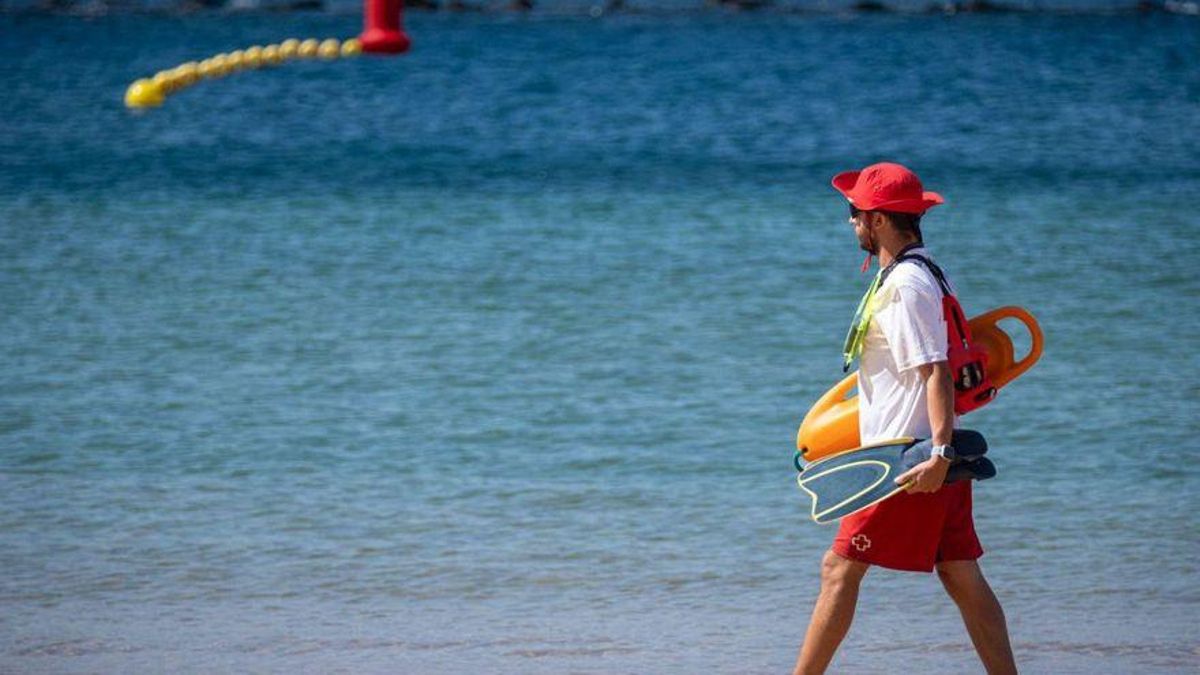Bells, applause, cheers, and tears welcome the arrival of the Virgen del Socorro as she approaches her hermitage on the coast of Güímar. Mobile phones rise to capture the moment as hundreds of voices join in the Pasodoble, intensifying the emotion felt by the entire community. Along the route, many locals opened their doors and windows in a splendid gesture of hospitality, offering food or drink to those accompanying their patroness.
Five hours after the doors of the San Pedro church opened for the start of the Pilgrimage to the Sea, the image entered its temple. Surrounding it were tens of thousands of people from across the Island, relishing the warm day in their own way.
Too many memories, feelings, emotions, and experiences from both past and present. The festival is a symbol of the municipality, the Valle de Güímar region, and Tenerife. It is also a reference for tranquillity, a chance to meet with loved ones, friends, or acquaintances, who are often only seen during the Bajada de la Virgen.
In this gathering, social classes do not matter. From the wealthiest families to the humblest homes; whether in a garden shaded by a tree or in an unfinished garage converted into a dining area.
The tradition of some people staying overnight inside the hermitage still exists. This is in the section of the temple specifically built for this purpose, which is closest to the sea, as noted by local resident José Mesa.
Juan de la Cruz, one of the most recognised experts in traditional Canarian dress, firmly asserts that the Bajada de la Virgen del Socorro is the “most authentic” pilgrimage celebrated in Tenerife.
He explains that it is indeed so, as there is no requirement for anyone to dress in traditional or typical attire. Each participant dresses as they see fit, making it a popular event with its own history and identity.
A key feature highlighted by De la Cruz is the emergence of spontaneous parrandas, facilitated by a comfortable pathway, navigating a route where the people act with “order and decorum, which is the most important thing.”
The interior decoration of the hermitage is also commendable. Once a common practice, it has largely fallen out of favour in contemporary celebrations in favour of decorations from florists, as the researcher indicates. However, this is not the case in El Socorro, where a “popular adornment” using palm fronds and other elements persists.
Next to a nougat stall, a parranda entertains the gathered crowd. A man from the group “Remembering is Living” leads with the singing and plays the saxophone. He is joined by three guitars and an accordion, while a woman later contributes with a timple. Songs like Vete a lavar morena, a pasodoble, or an isa invite those nearby to join in.
In other areas, reggaeton, merengue, and salsa can be heard. The Quiosco El Socorro was overflowing, with Latin music adding to the lively atmosphere surrounding the hermitage.
Just a few metres from the above-mentioned parranda and a side door of his house, businessman Modesto Campos and his son await their meal. His father, Agustín Campos, and uncle, Pedro Modesto, were once stewards of the Virgen del Socorro, and Modesto himself has held this role as well.
He experiences the festivity “with much enthusiasm” every year. He explains that he, “open[s] my house to offer everyone a glass of wine or a croquette, or a chicken leg.” In his view, “the festival is growing, it is very popular, and more and more people are coming; it has deep roots in the Valley.”
Across the street, María Rosa also has a house full of people, with family and friends gathered. Some only meet during this celebration. She recalls that the coastal town always attracts many visitors every 7th of September, regardless of what day of the week it may be.
From this neighbour’s perspective, on a day like this, “there is no place for verbenas, neither day nor night.” She clarifies that this is not the tradition. She stresses that this is a “festival of peace, not of fights, and everything is very calm.”
Maintaining tranquillity is not always easy. Before the Bajada began, an incident reportedly occurred at San Pedro church, according to some witnesses. An individual approached the altar, paused temporarily, and stated that the event was the celebration of Chaxiraxi (according to some texts, the goddess of the Guanches, meaning the one who carries the King of the World or Mother of the Sun). He argued that it made no sense to hold a Christian mass. After this, the event continued as normal.
The Mayor, Carmen Luisa Castro, stated that according to police estimates, around 60,000 people attended the Bajada.
Up until 4 PM, there were approximately 46 minor incidents, primarily related to heat exhaustion, fainting, falls, or alcohol intoxication. A dozen operations were initiated by the emergency room of 1-1-2.
In addition to the Mayor and the municipal corporation, the pilgrimage was attended by the Vice President of the Government of the Canary Islands, Manuel Domínguez; the President of the Cabildo of Tenerife, Rosa Dávila; and the Vice President of the island corporation, Lope Afonso. Numerous public officials from the PP party, to which Carmen Luisa Castro belongs, were also present.














